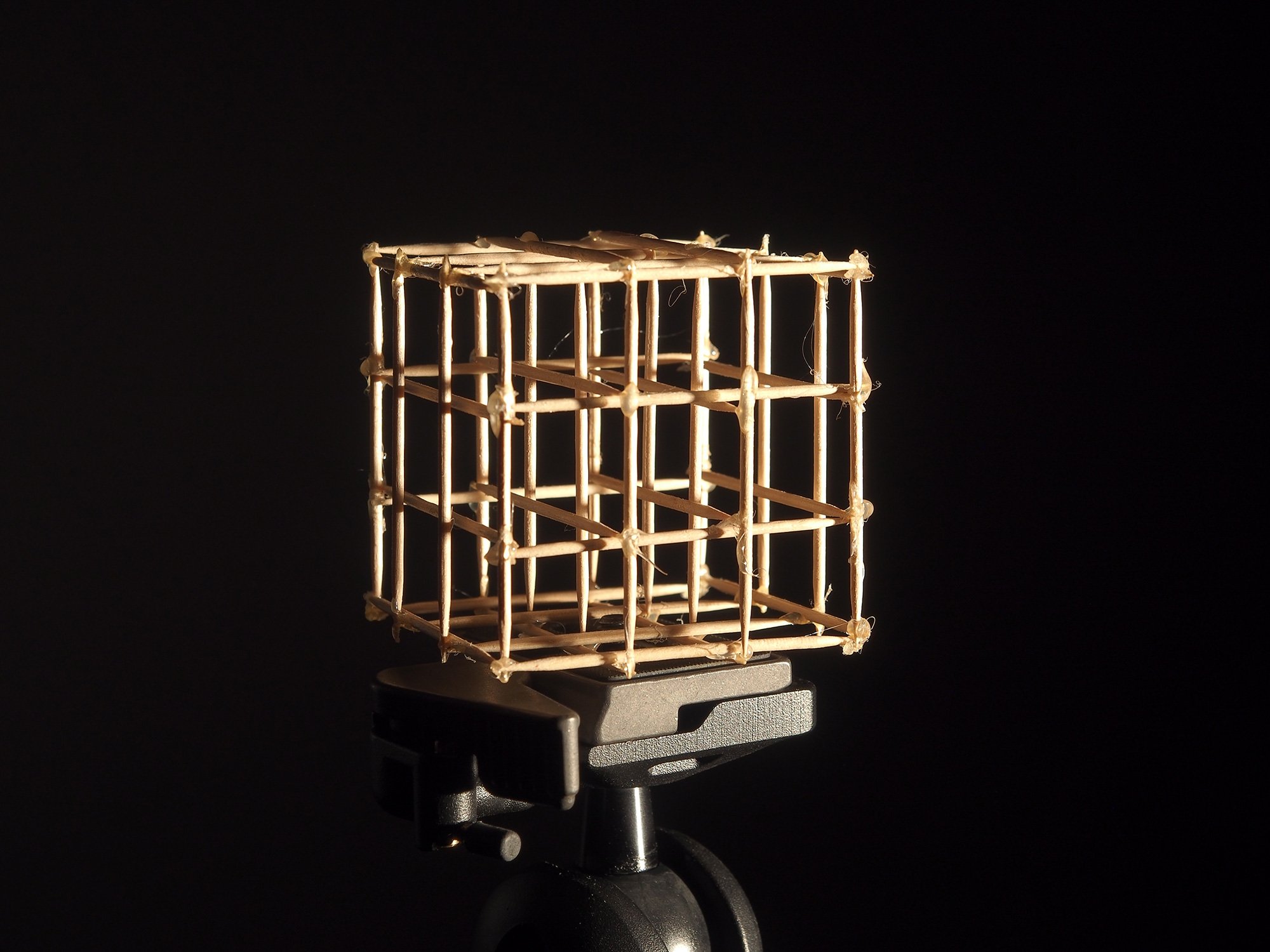
PERCEPTION STUDIES
Situated between visual art and perceptual science, Seth Riskin uses light to communicate with the human brain. He develops tools and techniques for reducing light to low-dimensional geometric figures.
In dark environments, “units” of light information (e. g. points or lines) project from Riskin’s body to the boundaries of the room. By conducting the nuanced control of the low-dimensional light projections—distance, direction, orientation, and speed—he shapes higher-dimensional percepts in viewer experience: a line sweeps into a plane, a plane, into a 2D manifold that stimulates perception of form and depth.
This method enables Riskin to study the construction and deconstruction of perceptual space and time, an approach he has continued to refine over the past 30 years through original performances and bench-top experiments. In a sense, Riskin turns vision inside out; by nuanced manipulations of light minima from the body, Riskin evokes low-level perceptual responses, making them accessible to conscious study.
Riskin’s work proposes dialogue with research in vision neuroscience concerning how space and time are encoded in the human visual system. Following in the artistic tradition of probing perception by physical creation, Riskin’s artwork, research and teaching aim at vital exchange between experiential and analytical methods for collaborative discoveries on the nature of perception.
Above, Riskin is enveloped by the light that he uses to shape perception of space, a method he explores in bench-top experiments like those described below. Original research by Seth Riskin, these perception studies are published in his dissertation, Light Dance: Beyond the Dichotomy of Light and Vision (Plymouth University 2021).
Solid Cube
The two reference images show the set up for the Solid Cube experiment. In this experiment, a wooden cube painted white is mounted on the shaft of a variable-speed motor. A thin line of white light is cast onto a rotating mirror, also mounted on a variable-speed motor. The mirror sweeps the light line across the cube surface. The rotations of the cube and the mirror span from 15 – 30 rotations/second. The patterns of brightness and darkness compose a three-dimensional object in perception, one that shows radial reference to the source: lines are curved, perspectives are multiple and the vanishing point of the perspective lines lies in the space of the viewer—all indicators of inverse perspective.
Lattice Cube
The lattice cube is rotated about its central, vertical axis. A line of laser light oriented vertically sweeps over the cube, revealing it as a time-based image seen in multiple perspectives. The lattice cube appears curved like a portion of a spherical sector. The perceived material form demonstrates inverse perspective, growing larger with distance.
Plane and line of light
An aluminum plate painted white rotates on the shaft of a variable-speed motor. A similarly rotating mirror sweeps a line of laser light over the surface of the aluminum plate. The visual result is curvature. Changing the direction of the light line’s sweep across the plane gives a variety of transformations. The object can be turned “inside-out”, i.e., the movements of the object and the slice-illumination combine generate an inverted spatial order in perception.
Right Angle Corner
An inward corner made of wood, 28” wide by 15” tall, is set on a turntable. A line of laser light oriented vertically scans over the rotating corner. As the corner rotates clockwise, the line scans counterclockwise, resulting in the perceived object in red. In Light Dance, movements about multiple axes are generated by the body, e.g., the instrumented arm of the performer rotates about multiple axes. The convolution of the sweeping brightness interacting with rectilinear architecture generates complex, curvilinear brightness-structures in perception.
Space-Time Modulator
In this experimental system for optically sculpting a rigid object, the periodic movements of a laser line and a rotating object (cone) are adjusted toward a stable, transformed object in perception. The line sweeps over the cone at a rate of 15 – 30 times per second. In perception, the cone appears elongated or contracted and can be shaped by adjusting the relative speeds and directions of the motors.



















